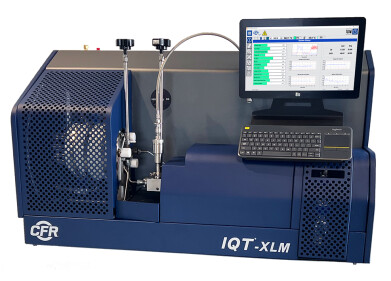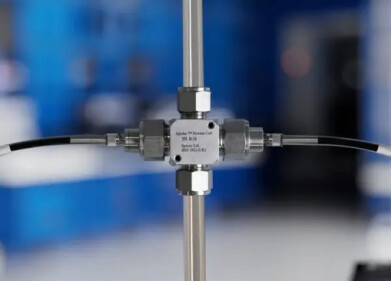-
 MA-300
MA-300 -
 Image A: Method - Decomposition conditions
Image A: Method - Decomposition conditions -
 Image B: Results
Image B: Results
Analytical Instrumentation
Total Mercury in Crude Oil Using Direct Mercury Analysis
Mar 21 2018
Background
Mercury levels in crude can be widely variable, both between and within reservoirs and geographical areas. Detectable mercury components of crude oils would include elemental mercury, mercuric chloride, mercuric sulfide, mercuric selenide, dimethylmercury, and diethylmercury. These can exist in soluble, insoluble, gaseous, solid and liquid states. While the low mercury average levels found in crude oil (ca. 3.5 μg/kg) do not seem to represent an environmental hazard, the refining process tends to concentrate and collect the mercury components and direct the emissions to air release, petroleum products and waste products.
In 2001, the EPA estimated that US petroleum refineries were responsible for approximately 11 tons of mercury release annually. Mercury poses several issues for refineries beyond just environmental release. Mercury is detrimental to the refining process through amalgamation with other metals, poisoning of catalysts, and liquid metal embrittlement (cracking) with metals such as aluminum. Mercury is also dangerous to both natural ecosystems and humans because it is highly toxic, especially because of its ability to damage the central nervous system. Thus, to prevent both mercury poisoning and damage to the refining infrastructure, it is necessary to accurately quantify total mercury in crudes.
Instrumentation
Measurement of mercury in crude oil can be performed directly with the NIC MA-3000, a dedicated direct mercury analyser that selectively measures total mercury by thermal decomposition, gold amalgamation and cold vapor atomic absorption spectroscopy, on virtually any sample matrix – solid, liquid, and gas. The MA-3000 offers quick results without any tedious, time-consuming and elaborate sample preparation process. It is an ideal solution for today’s increasing laboratory demand for easy, fast and accurate mercury measurements.
Regulation
Compliance with USEPA 7473, ASTM D -7623-10.
Sampling
Pelletized activated carbon is used as an additives.
Calibration
Calibration is done using certified aqueous ionic-mercury standard solution diluted to the required concentration. The least-squares regression method is used to create and complete the calibration curve.
Method
Decomposition conditions -
Carrier gas: Air
After measuring samples, in the example below, reliability was checked by SRM “NIST-1515 (apple leaves)”.
(Please see image A)
Results
(Please see image B)
Apple leaves: Certifi cated values (Total Hg) 0.040 ~ 0.048 mg/kg
Conclusion
The results confirm that the NIC MA-3000 correctly analyzes apple leaves (NIST 1515) after repeated analysis of crude oil, verifying instrument reliability, and analyzes crude oil samples with accuracy and precision.
References
• WHO HP
• Marine
Digital Edition
PIN 25.5 Oct/Nov 2024
November 2024
Analytical Instrumentation - Picturing Viscosity – How Can a Viscometer or a Rheometer Benefit You? - Sustainable Grease Formulations: Evaluating Key Performance Parameters and Testing Method...
View all digital editions
Events
Dec 03 2024 Dusseldorf, Germany
Dec 08 2024 Anaheim, CA, USA
Turkey & Black Sea Oil and Gas
Dec 11 2024 Istanbul, Turkey
Dec 19 2024 Aurangabad, India
Jan 20 2025 San Diego, CA, USA


















